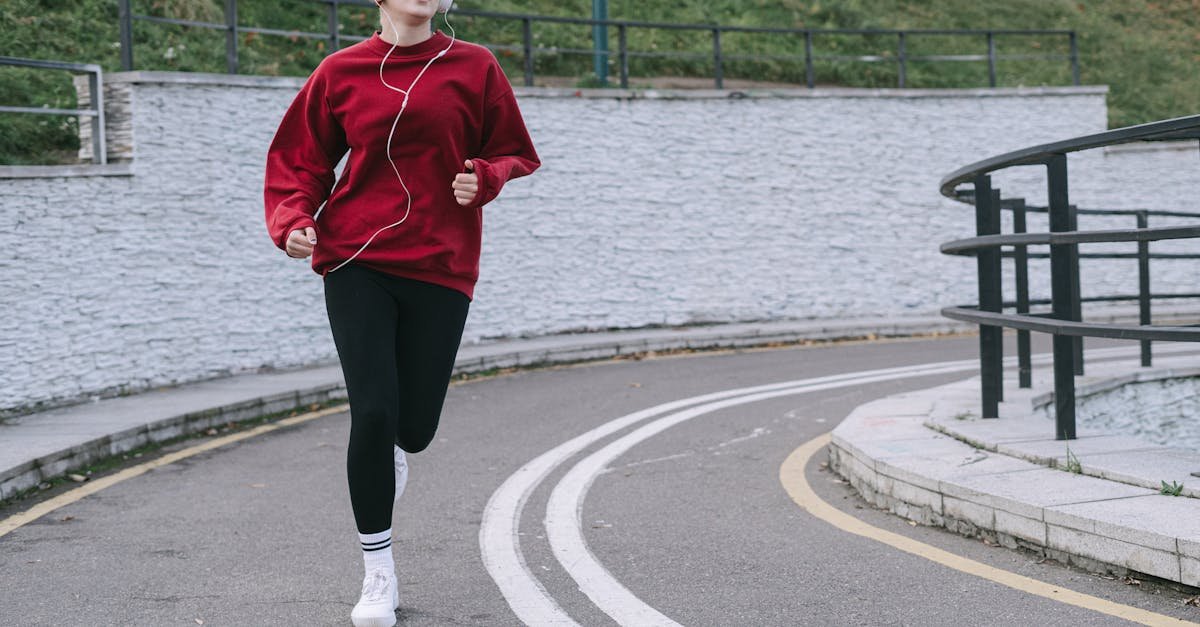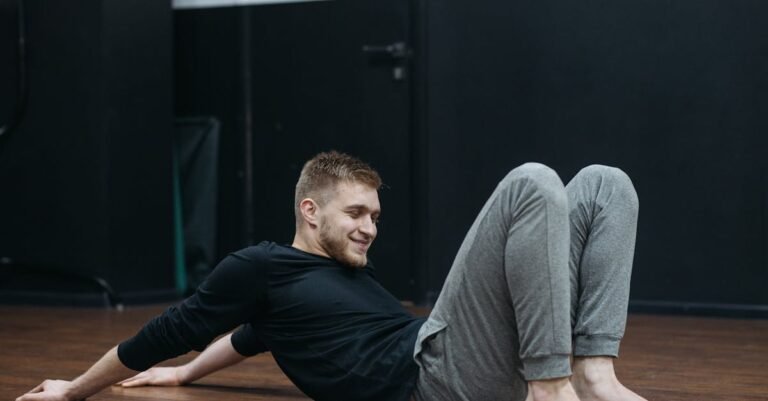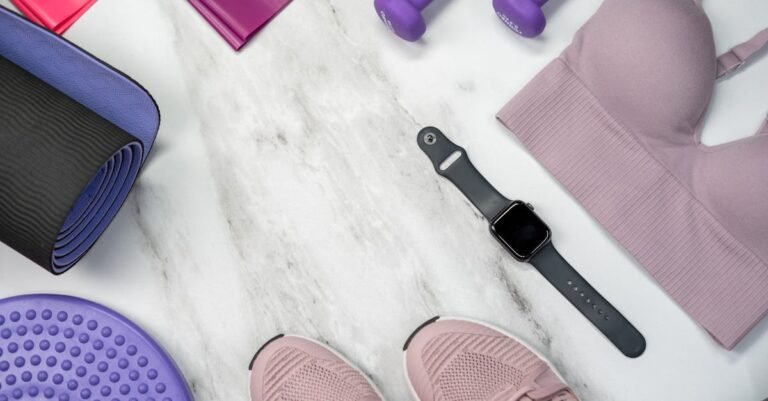Table of Contents
- Fitness Apps To Help You Stay On Track
- Why Use Fitness Apps Anyway?
- Choosing the Right Fitness App for YOU
- Top Fitness Apps Taking the World by Storm
- Making the Most of Your Fitness App
- The Future of Fitness Apps
- Conclusion: Your Digital Fitness Partner Awaits
- Frequently Asked Questions (FAQs)
Fitness Apps To Help You Stay On Track
Let’s be honest, staying committed to fitness goals can feel like trying to herd cats sometimes, right? One day you’re all fired up, ready to conquer the world (or at least the treadmill), and the next, the couch is calling your name with an almost irresistible siren song. Life gets busy, motivation dips, and before you know it, those well intentioned plans fall by the wayside. But what if you had a personal trainer, nutritionist, and cheerleader all rolled into one, conveniently living in your pocket? Well, guess what? You can! Welcome to the world of fitness apps – your secret weapon for staying on track and crushing those goals.
These nifty pieces of technology have revolutionized how we approach health and wellness. No longer are we solely reliant on expensive gym memberships or rigid personal training schedules. Fitness apps offer flexibility, guidance, and a whole lot of motivation right at our fingertips. Whether you’re a seasoned gym goer or just starting your fitness journey, there’s likely an app out there perfectly suited to your needs. Ready to find yours?
Why Use Fitness Apps Anyway?
You might be thinking, “Another app? My phone is already cluttered!” I get it. But trust me, the right fitness app isn’t just another icon taking up space; it’s a powerful tool. Think about it: when was the last time you left home without your phone? Probably ages ago, if ever! Having your fitness plan, tracker, and guide right there with you makes sticking to your routine infinitely easier.
Convenience is King
This is perhaps the biggest draw. Forget trying to squeeze in a gym session between work, errands, and family time. Fitness apps let you work out whenever and wherever suits you. Waiting for the kids at soccer practice? Squeeze in a quick bodyweight circuit. Early riser? Get your yoga session done before anyone else is awake. Traveling for work? Your workout plan travels with you. It removes the friction of needing to be in a specific place at a specific time, making fitness accessible on your terms. It’s like having a gym that fits in your pocket and operates 24/7.
Motivation on Demand
We all have days when we lack motivation. Fitness apps often come packed with features designed to keep you going. Think push notifications reminding you of your scheduled workout, virtual badges and trophies for hitting milestones, progress charts showing how far you’ve come, and even community features where you can connect with and cheer on fellow users. It’s like having a little digital cheerleader urging you on, celebrating your wins, and reminding you why you started in the first place. Some apps even use gamification, turning fitness into a fun challenge rather than a chore.
Tracking Progress Made Easy
How do you know if you’re actually getting fitter or stronger if you’re not tracking your progress? Fitness apps make this incredibly simple. Log your workouts, record the weights you lifted, track the distance you ran, monitor your heart rate, count your steps, even log your meals and water intake. Seeing those numbers improve over time – lifting heavier, running faster, eating healthier – is incredibly rewarding and provides concrete proof that your hard work is paying off. This data isn’t just motivating; it helps you make informed decisions about adjusting your routine for better results.
Choosing the Right Fitness App for YOU
Okay, so you’re sold on the idea. But navigating the app store can feel overwhelming. There are literally thousands of fitness apps vying for your attention. How do you pick the one that’s actually going to help you? It boils down to understanding your own needs and preferences.
Know Your Goals
First things first: what are you trying to achieve? Your primary goal will heavily influence the type of app you need. Are you aiming for weight loss? Look for apps with strong calorie tracking and meal planning features. Focused on building muscle? You’ll want an app specializing in strength training programs and weight lifting logs. Training for a marathon? An app with GPS tracking, pace analysis, and running plans is essential. Just want to improve overall health and move more? A general fitness app with varied workouts and activity tracking might be perfect.
Weight Loss? Muscle Gain? General Health?
Let’s dive a bit deeper. If weight loss is the goal, an app like MyFitnessPal or Lose It! offers extensive food databases and calorie counting, which are crucial. If muscle gain is your focus, apps like StrongLifts 5×5 or Jefit provide structured lifting programs and allow you to meticulously track sets, reps, and weights. For improving cardiovascular fitness, Strava or Nike Run Club excel with run/cycle tracking and community challenges. For general wellness, apps offering a mix of cardio, strength, yoga, and meditation, like Peloton Digital or Apple Fitness+, might be ideal. Be specific about your objective!
Consider Your Budget
Fitness apps range from completely free to requiring hefty monthly subscriptions. Don’t just download the first free app you see, but also don’t assume you need the most expensive one for results. Many fantastic apps operate on a ‘freemium’ model, offering basic functionality for free with optional paid upgrades for premium features like personalized plans, advanced analytics, or more workout variety.
Free vs. Freemium vs. Paid
Free apps: Often supported by ads or offer very basic tracking. Good for getting started or if you just need simple logging. Examples might include basic step counters or simple workout logs.
Freemium apps: This is a popular model. You get core features for free (e.g., calorie tracking, basic workouts) but pay for extras (e.g., detailed meal plans, specialized training programs, ad removal). MyFitnessPal and Strava largely fit here. This allows you to test the waters before committing financially.
Paid apps: Usually require a monthly or annual subscription. These often provide higher production value, extensive libraries of guided workouts led by professional trainers, personalized coaching, and more niche features. Peloton Digital, Daily Burn, and Glo fall into this category. Consider if the premium content justifies the ongoing cost for your needs.
What Features Matter Most?
Beyond goals and budget, think about the specific features that will enhance your experience and keep you engaged. Do you need video demonstrations for exercises? Is tracking your meals as important as tracking your workouts? Does connecting with friends or a wider community motivate you?
Workout Libraries, Meal Tracking, Community?
Some key features to look out for include:
- Workout Variety: Does it offer different types of workouts (strength, cardio, HIIT, yoga, etc.)? How large is the library? Are new workouts added regularly?
- Guidance: Does it provide video or audio guidance during workouts? Are there structured programs or just individual exercises?
- Tracking Capabilities: What can you track? Workouts, nutrition, water intake, steps, sleep, measurements? How detailed is the tracking?
- Customization: Can you create your own workouts or customize existing plans?
- Community/Social Features: Can you connect with friends, join challenges, or share progress?
- Integration: Does it sync with other apps or wearables (like Apple Health, Google Fit, Fitbit, Garmin)?
- User Interface: Is the app easy and intuitive to navigate? A clunky interface can be a major turn off.
Make a checklist of your ‘must have’ features versus ‘nice to have’ features to help narrow down your options.
Top Fitness Apps Taking the World by Storm
While the ‘best’ app is subjective, some consistently rise to the top due to their features, user base, and effectiveness. Here are a few popular choices catering to different needs:
For the All Rounder: MyFitnessPal
Often hailed as the king of calorie counting, MyFitnessPal boasts a massive food database (seriously, it’s huge!) making nutritional tracking a breeze. You can scan barcodes, manually enter foods, or save meals. Beyond nutrition, it also tracks exercise and integrates with numerous other fitness apps and devices. While its workout tracking isn’t the most robust, its strength lies in providing a holistic view of your calorie intake versus expenditure. The free version is incredibly powerful, though a premium subscription unlocks deeper nutritional insights and meal planning tools.
For Strength Training Buffs: StrongLifts 5×5
If your main goal is getting stronger through weightlifting, StrongLifts 5×5 is a fantastic, no nonsense option. It focuses specifically on the proven 5×5 workout program (five sets of five reps) using compound exercises like squats, bench press, deadlifts, overhead press, and rows. The app tells you exactly what exercises to do, how much weight to lift (based on your previous performance), and when to rest. It automatically calculates weight progression, making it simple to follow a structured strength plan. It’s beautifully simple and effective for building foundational strength.
For the Cardio Enthusiast: Strava
Runners and cyclists, rejoice! Strava is essentially a social network built around tracking your rides and runs via GPS. It records your distance, pace, speed, elevation gain, and heart rate (if using a compatible monitor). But its real magic lies in the social and competitive aspects. You can follow friends, join clubs, participate in challenges, and compete on ‘segments’ (stretches of road or trail) for bragging rights (KOM/QOM – King/Queen of the Mountain!). It gamifies cardio in a way that keeps many users hooked and pushing their limits.
For Guided Workouts at Home: Peloton Digital
You don’t need the fancy bike or treadmill to access Peloton’s vast library of high energy, instructor led classes. The Peloton Digital app offers thousands of on demand and live workouts across various disciplines – cycling, running, strength, yoga, meditation, bootcamp, stretching, and more. The instructors are charismatic, the production quality is top notch, and the sense of community (even through the app) is strong. It’s a subscription based service, but it brings the boutique fitness class experience right into your living room.
For Mindful Movement: Glo (Yoga & Meditation)
Fitness isn’t just about sweating buckets; mindful movement and mental wellbeing are equally important. Glo offers a massive library of yoga, Pilates, and meditation classes led by world class instructors. You can filter classes by style, duration, level, focus area (e.g., back pain, sleep), and teacher. Whether you have 5 minutes for a quick meditation or 90 minutes for an advanced vinyasa flow, Glo has something to offer. It’s subscription based but provides incredible value for those seeking flexibility, stress relief, and a deeper connection with their body and mind.
Making the Most of Your Fitness App
Downloading the app is just the first step. To truly make it work for you and help you stay on track, you need to actively use it and integrate it into your routine.
Consistency is Key
This sounds obvious, but it’s crucial. An app can’t do the work for you. Schedule your workouts in the app (and your calendar!), set reminders, and make logging your activity or meals a non negotiable habit. Even on days you don’t feel like doing a full workout, maybe log a walk or do a short stretching session through the app. Maintaining the habit of opening and interacting with the app keeps your goals top of mind.
Don’t Be Afraid to Explore
Don’t just stick to the one workout routine or feature you first discovered. Most apps have a wealth of content. Try different types of workouts, explore different instructors, delve into the nutritional information, or check out the analytics section. You might discover a new form of exercise you love or gain insights that help you break through a plateau. Variety can also prevent boredom and keep things exciting.
Engage with the Community (If Available)
If your chosen app has social features, use them! Connect with friends who use the same app, join group challenges, share your progress (if you’re comfortable), and offer encouragement to others. This sense of accountability and camaraderie can be incredibly motivating. Knowing others are on a similar journey, sharing struggles and successes, makes the process feel less isolating and more like a team effort.
The Future of Fitness Apps
The world of fitness apps is constantly evolving. We’re seeing increased integration with wearable technology, providing even more detailed biometric data (like heart rate variability, sleep quality, and recovery scores). Artificial intelligence (AI) is playing a bigger role, offering more personalized workout recommendations and dynamic adjustments based on your performance and feedback. Virtual reality (VR) and augmented reality (AR) fitness experiences are also emerging, promising more immersive and engaging ways to exercise. Imagine sparring with a virtual boxing coach or running through stunning virtual landscapes! The future looks personalized, data driven, and incredibly interactive.
Conclusion: Your Digital Fitness Partner Awaits
Staying fit and healthy is a journey, not a destination, and sometimes we all need a little help navigating the path. Fitness apps offer an accessible, convenient, and often motivating way to keep moving towards your goals. From tracking your calories and workouts to providing guided classes and fostering community, there’s an app out there that can become your perfect digital fitness partner.
The key is to choose wisely based on your individual goals, budget, and preferred features. Don’t just download and forget; engage with the app consistently, explore its offerings, and leverage its tools to build sustainable healthy habits. So, take a moment, consider what you need, explore some options, and download an app that resonates with you. Your future, fitter self will thank you!
Frequently Asked Questions (FAQs)
1. Are free fitness apps effective?
Absolutely! Many free or freemium apps offer excellent core functionality, especially for tracking basics like steps, workouts, or calories (like MyFitnessPal’s free version). Their effectiveness depends on your needs. If you need basic tracking and are self motivated, a free app can be perfect. If you desire extensive guided workouts or personalized plans, you might find more value in a paid or freemium upgrade.
2. Can fitness apps replace a personal trainer or gym membership?
For some people, yes, especially with apps offering high quality guided workouts and structured programs. They offer flexibility and are often more affordable. However, apps can’t replicate the real time, personalized feedback on form that an in person trainer provides, nor the variety of equipment and atmosphere of a gym. Many people find success combining apps with occasional trainer check ins or using them as a supplement to gym workouts.
3. How much time do I need to commit to using a fitness app daily?
It varies! Logging a workout might take a minute or two. Tracking meals can take 5 10 minutes throughout the day, especially initially. The workout itself depends on the program you choose – some apps offer 5 minute quick hits, while others feature hour long classes. The key is consistency, not necessarily hours logged in the app itself, but in following the plan the app helps you manage.
4. Is it safe to follow workout routines from fitness apps?
Generally, reputable fitness apps feature workouts designed by certified professionals. However, it’s crucial to listen to your body. Start slowly, especially if you’re new to exercise. Pay attention to proper form (many apps include video demonstrations). If you have pre existing health conditions or injuries, it’s always best to consult your doctor before starting any new fitness program, app based or otherwise.
5. Do fitness apps drain my phone battery quickly?
Some features, particularly GPS tracking for runs or cycling (like in Strava), can consume more battery power. However, simply logging workouts or food usually has a minimal impact. Most apps are optimized to be reasonably battery efficient. If you plan on long GPS tracked activities, ensure your phone is adequately charged beforehand.










